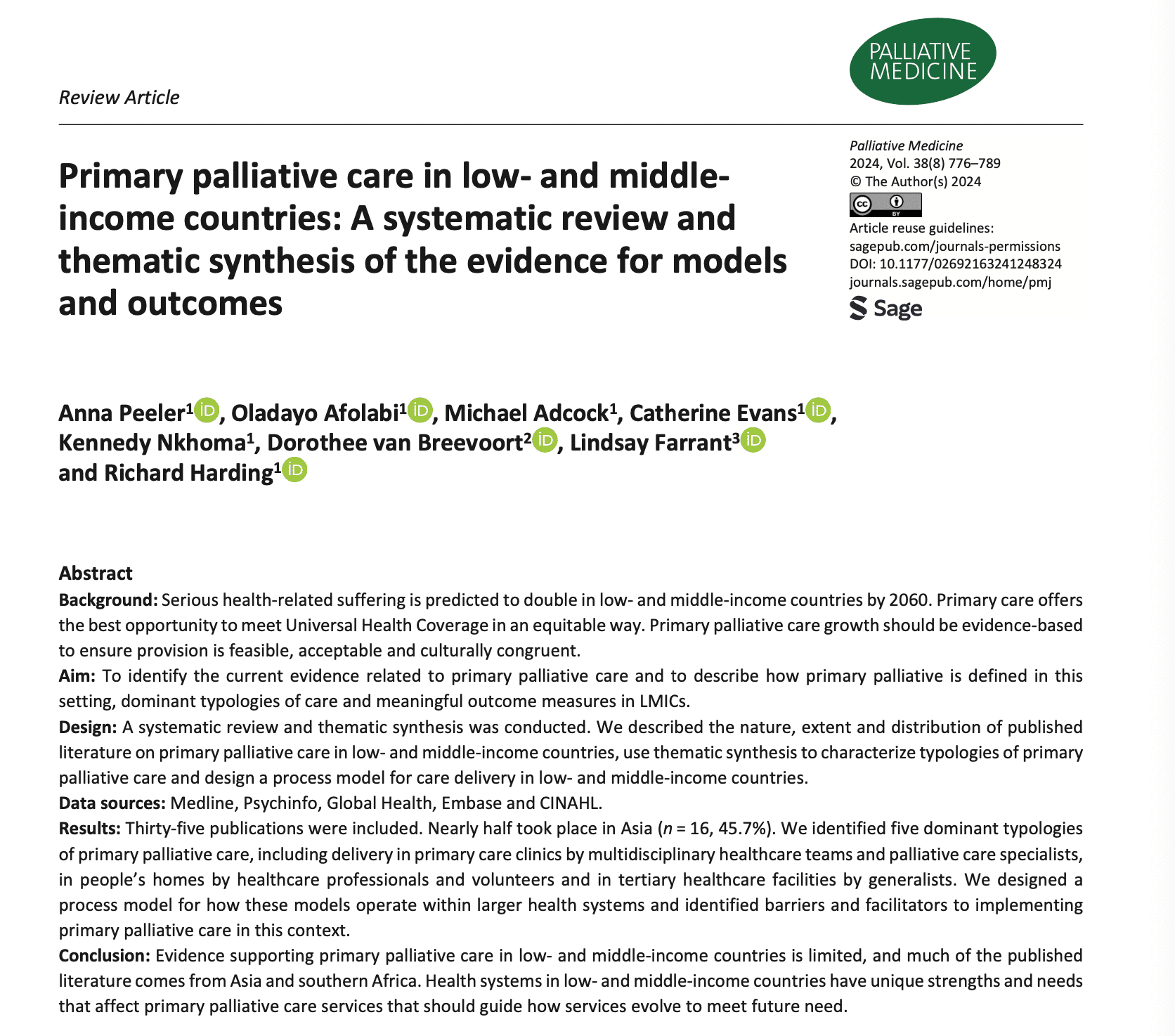Vital Strategies
Principles of Alcohol Taxation
Briefs & Fact Sheets
24 Nov 2025
01 May 2024

What is already known about this topic?
•• Much of the primary palliative care literature centres around health systems in high-income countries and falls short of
considering the unique strengths and challenges of health systems in LMICs.
What does this paper add?
•• Primary palliative care literature focussed on LMICs is limited, particularly in the central and South Americas and parts of Africa. Published literature likely does reflect all primary palliative care services that are delivered in LMICs.
Implications for practice, theory or policy
•• Future research should focus on how to sustainably staff and fund primary palliative care services, how to effectively train and mentor staff to deliver these services to meet the growing need, how to best conduct holistic assessment and
achieve goal-concordant care LMICs and how to enable patients with life limiting illness to remain at home.